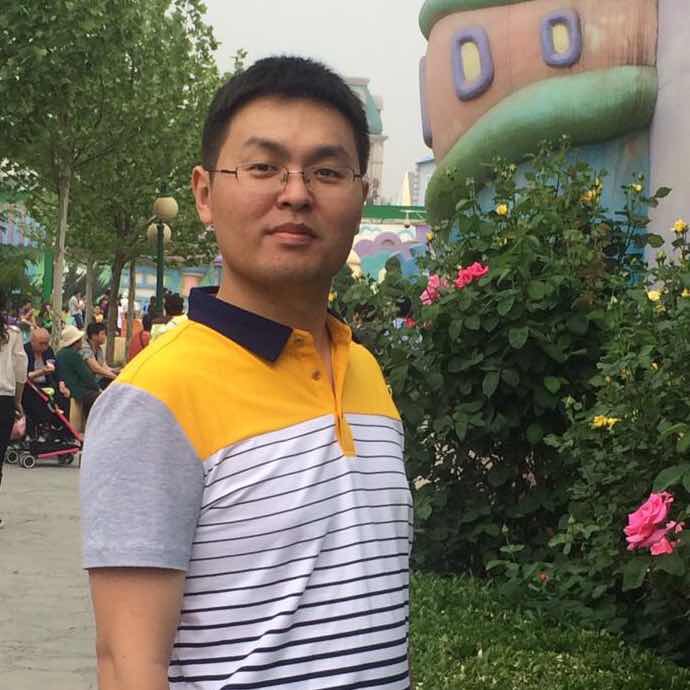VUE源码阅读笔记3:vue初始化都发生了哪些故事
接上节,我们看一下vue的初始化都做了哪些事情
所在文件:src/instance/init.js
import config from '../config'
import { initProxy } from './proxy'
import { initState } from './state'
import { initRender } from './render'
import { initEvents } from './events'
import { mark, measure } from '../util/perf'
import { initLifecycle, callHook } from './lifecycle'
import { initProvide, initInjections } from './inject'
import { extend, mergeOptions, formatComponentName } from '../util/index'
let uid = 0
export function initMixin (Vue: Class<Component>) {
Vue.prototype._init = function (options?: Object) {
const vm: Component = this
// a uid
//给每个vue实例指定一个uid
vm._uid = uid++
....
// 合并 options
if (options && options._isComponent) {
// optimize internal component instantiation
// since dynamic options merging is pretty slow, and none of the
// internal component options needs special treatment.
initInternalComponent(vm, options)
} else {
vm.$options = mergeOptions(
resolveConstructorOptions(vm.constructor),
options || {},
vm
)
}
// expose real self
vm._self = vm
//初始化生命周期
initLifecycle(vm)
//初始化事件
initEvents(vm)
//初始化render
initRender(vm)
//调用钩子函数beforeCreate,此时还没有初始化state,data/props还不能调用
callHook(vm, 'beforeCreate')
//初始化注入
initInjections(vm) // resolve injections before data/props
//初始化状态
initState(vm)
initProvide(vm) // resolve provide after data/props
//调用钩子函数created,此时可以调用data/props了
callHook(vm, 'created')
...
//如果实例化Vue时指明了el,则进行挂载
if (vm.$options.el) {
vm.$mount(vm.$options.el)
}
}
}初始化分成这几步
合并参数options
初始化声明周期、事件、render
调用钩子函数 beforeCreate
初始化注入、状态
调用钩子函数created
挂载
接下来我们一个一个细看都发生了什么,首先看一下初始化声明周期initLifecycle
export function initLifecycle (vm: Component) {
const options = vm.$options
//找到第一个非抽象父组件
// locate first non-abstract parent
let parent = options.parent
if (parent && !options.abstract) {
while (parent.$options.abstract && parent.$parent) {
parent = parent.$parent
}
//把当前实例添加到父元素的子组件数组中
parent.$children.push(vm)
}
vm.$parent = parent
vm.$root = parent ? parent.$root : vm
vm.$children = []
vm.$refs = {}
//初始化声明周期的标识flag值
vm._watcher = null
vm._inactive = null
vm._directInactive = false
vm._isMounted = false
vm._isDestroyed = false
vm._isBeingDestroyed = false
}声明周期初始化比较简单,接下来看看初始化事件initEvents
export function initEvents (vm: Component) {
//创建一个空对象,用来存储事件
vm._events = Object.create(null)
vm._hasHookEvent = false
// init parent attached events
//初始化父组件捕获的事件,_parentListeners其实是父组件模板中写的v-on
const listeners = vm.$options._parentListeners
if (listeners) {
//将父组件模板中注册的事件,放到当前组件实例的listeners里面
updateComponentListeners(vm, listeners)
}
}继续深入看updateComponentListeners
export function updateComponentListeners (
vm: Component,
listeners: Object,
oldListeners: ?Object
) {
target = vm
updateListeners(listeners, oldListeners || {}, add, remove, vm)
target = undefined
}继续updateListeners,不是十分明白这块,先暂时忽略吧,哈哈
export function updateListeners (
on: Object,
oldOn: Object,
add: Function,
remove: Function,
vm: Component
) {
let name, def, cur, old, event
for (name in on) {
def = cur = on[name]
old = oldOn[name]
//事件name、once、capture、passive
event = normalizeEvent(name)
/* istanbul ignore if */
if (__WEEX__ && isPlainObject(def)) {
cur = def.handler
event.params = def.params
}
if (isUndef(cur)) {
process.env.NODE_ENV !== 'production' && warn(
`Invalid handler for event "${event.name}": got ` + String(cur),
vm
)
} else if (isUndef(old)) {
if (isUndef(cur.fns)) {
cur = on[name] = createFnInvoker(cur)
}
add(event.name, cur, event.once, event.capture, event.passive, event.params)
} else if (cur !== old) {
old.fns = cur
on[name] = old
}
}
for (name in oldOn) {
if (isUndef(on[name])) {
event = normalizeEvent(name)
remove(event.name, oldOn[name], event.capture)
}
}
}接下来查看initRender
export function initRender (vm: Component) {
vm._vnode = null // the root of the child tree
vm._staticTrees = null // v-once cached trees
const options = vm.$options
const parentVnode = vm.$vnode = options._parentVnode // the placeholder node in parent tree
const renderContext = parentVnode && parentVnode.context
//处理组件slot,返回slot插槽对象
vm.$slots = resolveSlots(options._renderChildren, renderContext)
vm.$scopedSlots = emptyObject
// bind the createElement fn to this instance
// so that we get proper render context inside it.
// args order: tag, data, children, normalizationType, alwaysNormalize
// internal version is used by render functions compiled from templates
vm._c = (a, b, c, d) => createElement(vm, a, b, c, d, false)
// normalization is always applied for the public version, used in
// user-written render functions.
vm.$createElement = (a, b, c, d) => createElement(vm, a, b, c, d, true)
// $attrs & $listeners are exposed for easier HOC creation.
// they need to be reactive so that HOCs using them are always updated
const parentData = parentVnode && parentVnode.data
/* istanbul ignore else */
if (process.env.NODE_ENV !== 'production') {
//定义响应式属性$attrs,其值为父组件的属性,猜想是不是当父组件的属性变化后,子组件也要跟着更新
defineReactive(vm, '$attrs', parentData && parentData.attrs || emptyObject, () => {
!isUpdatingChildComponent && warn(`$attrs is readonly.`, vm)
}, true)
//同上
defineReactive(vm, '$listeners', options._parentListeners || emptyObject, () => {
!isUpdatingChildComponent && warn(`$listeners is readonly.`, vm)
}, true)
} else {
defineReactive(vm, '$attrs', parentData && parentData.attrs || emptyObject, null, true)
defineReactive(vm, '$listeners', options._parentListeners || emptyObject, null, true)
}
}这里defineReactive就是利用观察者模式进行数据绑定的,下一节我们仔细来看
接下来查看调用钩子函数callHook
export function callHook (vm: Component, hook: string) {
// #7573 disable dep collection when invoking lifecycle hooks
pushTarget()
const handlers = vm.$options[hook]
if (handlers) {
//同名钩子函数可能有多个,数组遍历调用
for (let i = 0, j = handlers.length; i < j; i++) {
try {
//钩子函数中的this,执行组件实例
handlers[i].call(vm)
} catch (e) {
handleError(e, vm, `${hook} hook`)
}
}
}
if (vm._hasHookEvent) {
vm.$emit('hook:' + hook)
}
popTarget()
}初始化注入initInjections,不太明白,跳过
接下来看非常重要的initState
export function initState (vm: Component) {
//应该是用来存储监听
vm._watchers = []
const opts = vm.$options
if (opts.props) initProps(vm, opts.props) //如果有属性props,则初始化props
if (opts.methods) initMethods(vm, opts.methods) //如果有methods,初始化methods
if (opts.data) {
initData(vm) //有data,初始化data
} else {
observe(vm._data = {}, true /* asRootData */)
}
if (opts.computed) initComputed(vm, opts.computed) //初始化计算属性
if (opts.watch && opts.watch !== nativeWatch) {
initWatch(vm, opts.watch) //初始化watch
}
}可以看到初始化state主要包含这几块
初始化props
初始化methods
初始化data
初始化computed
初始化watch
初始化props
function initProps (vm: Component, propsOptions: Object) {
const propsData = vm.$options.propsData || {}
const props = vm._props = {}
// cache prop keys so that future props updates can iterate using Array
// instead of dynamic object key enumeration.
const keys = vm.$options._propKeys = []
const isRoot = !vm.$parent
// root instance props should be converted
if (!isRoot) {
toggleObserving(false)
}
//遍历props配置对象
for (const key in propsOptions) {
keys.push(key)
//获取属性值
const value = validateProp(key, propsOptions, propsData, vm)
/* istanbul ignore else */
if (process.env.NODE_ENV !== 'production') {
const hyphenatedKey = hyphenate(key)
if (isReservedAttribute(hyphenatedKey) ||
config.isReservedAttr(hyphenatedKey)) {
warn(
`"${hyphenatedKey}" is a reserved attribute and cannot be used as component prop.`,
vm
)
}
//响应式处理
defineReactive(props, key, value, () => {
if (!isRoot && !isUpdatingChildComponent) {
warn(
`Avoid mutating a prop directly since the value will be ` +
`overwritten whenever the parent component re-renders. ` +
`Instead, use a data or computed property based on the prop's ` +
`value. Prop being mutated: "${key}"`,
vm
)
}
})
} else {
//响应式处理
defineReactive(props, key, value)
}
// static props are already proxied on the component's prototype
// during Vue.extend(). We only need to proxy props defined at
// instantiation here.
if (!(key in vm)) {
//代理,访问this.**,相当于访问 this._props.**
proxy(vm, `_props`, key)
}
}
toggleObserving(true)
}初始化data
function initData (vm: Component) {
let data = vm.$options.data
data = vm._data = typeof data === 'function'
? getData(data, vm)
: data || {}
if (!isPlainObject(data)) {
data = {}
process.env.NODE_ENV !== 'production' && warn(
'data functions should return an object:\n' +
'https://vuejs.org/v2/guide/components.html#data-Must-Be-a-Function',
vm
)
}
// proxy data on instance
const keys = Object.keys(data)
const props = vm.$options.props
const methods = vm.$options.methods
let i = keys.length
while (i--) {
const key = keys[i]
if (process.env.NODE_ENV !== 'production') {
//data中属性不能和methods重名
if (methods && hasOwn(methods, key)) {
warn(
`Method "${key}" has already been defined as a data property.`,
vm
)
}
}
if (props && hasOwn(props, key)) {
//data中属性不能和props重名
process.env.NODE_ENV !== 'production' && warn(
`The data property "${key}" is already declared as a prop. ` +
`Use prop default value instead.`,
vm
)
} else if (!isReserved(key)) {
//代理,访问this.** 相当于访问 this._data.**
proxy(vm, `_data`, key)
}
}
// observe data
//观察数据
observe(data, true /* asRootData */)
}观察数据observe
export function observe (value: any, asRootData: ?boolean): Observer | void {
if (!isObject(value) || value instanceof VNode) {
return
}
let ob: Observer | void
if (hasOwn(value, '__ob__') && value.__ob__ instanceof Observer) {
ob = value.__ob__
} else if (
shouldObserve &&
!isServerRendering() &&
(Array.isArray(value) || isPlainObject(value)) &&
Object.isExtensible(value) &&
!value._isVue
) {
//实例化观察者
ob = new Observer(value)
}
if (asRootData && ob) {
ob.vmCount++
}
return ob
}针对data进行了实例化观察者操作,下一节我们来看vue的观察者设计模式。

本文由珊瑚学院作者蛰伏已久原创,如需转载请遵守版权声明
点赞(0)







